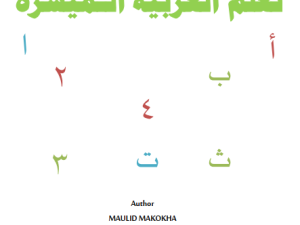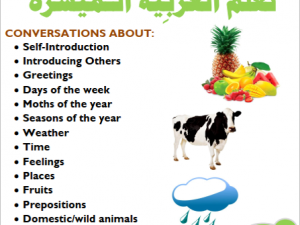Building & Construction
- Description
- Curriculum
Introduction
Objectives
1.2 Timber
1.2.1 Market Sizes of Tiniber
1.2.2 ClassificiiLion of Wood
1.2.3 Some Common Timber and Their Characteristics~ses
1.2.4 Felling and Seasoning of Wood
1.2.5 Character-istics of Good Timber
1.3 Carpentry Tools
1.3.1 Marking and Measuring 7’ot)ls
1.3.2 Holding Tool\
1.3.3 Planning T(:cll\
1.3.1 Cutting Touls
1.3.5 Chisels
1.3.6 Drilling and Boring Tools
1.3.7 Miscellanec~us Tools
1.4 Wood Working Procedure
1.4.1 Selection and Laying Out
1.4.2 Marking
1.4.3 Planning
1.4.4 Chiscling
1 4.5 Drilling of Boring Holes
1.5 Wood Joints
I 5.1 Tap Joints
1.5.2 Mortise and Tenon loint
1.5.3 Bridle loint
1.6 Aljaterial Selection
1.7 Joinery Materials
I .7.1 Adhesives
1.7.2 Nails
1.7.3 Wood Screws
1.7.4 Bolts and Nuts
1.7.5 Dowels and Pegs
1.8 Safe Practices and Maintenance of Tools
Carpentry
Carpentry is described as the technological process of making wooden components. It
starts from a marketable fonn of wood and ends with a formation of useful value added
finished product. The carpentry plays a vital role in the field of building work, furniture,
cabinet-manufacturing, interior decoration, toy manufacturing and so forth. Joinery, the
making of joints is one of the significant operations in all wood works.
TIMBER
Timber is the name given to the wood obtained from well grown trees. The trees are cut,
sawn into various sizes to suit the purposes.
The word, ‘grain’, as applied to wood, refers to the appearance or pattern of the wood on
the cut surfaces. The grain of the wood is a fibrous structure and to make it strong, the
timber must be so cut, that the grains run parallel to the length.
1.2.1 Market Sizes of Timber
Timber is sold in the market in various standard shapes and sizes. The following are
common shapes and sizes :
Log
The trunk of the tree, free from branches.
Block
The log, sawn to have roughly squarelrectangular cross-section.
Post
A round or square cross-section timber piece with diameter or side, varying from
175 to 300 mrn.
Plank
A sawn timber piece, with more than 275mm in width, 50 to 150 in thickness and
2.5 to 6.5 meters in length.
Board
A timber piece sawn below 50 mm thickness and more than 125 mm in width.
Batten
A timber piece swan below 175 mm in width and 30 to 50 mm in thickness.
Scantlings or Reapers
Sawn timber pieces of assorted and non-standard sizes those may not confirm to
the above shapes and sizes.
Beadings
Assorted timber pieces with small thickness with rectangular or square or any
designed cross section intended to use as the borders and frames
Classification of Wood
Woods are generally classified into two broad categories : Soft woods and Hard woods.
Hard and Soft Wood
Hard wood is generally obtained from a tree with deciduous or broad leaves
whereas the soft wood from trees having middle shaped conifers.
Examples Carpentry
Hard Woods
Teak, Sal, Oak, Shisham, Beach, Ash. Mango, Neem and Babul.
Soft Woods
Conifers, Kari, Deodar, Chir, Walnut, etc.
Soft wood is light in colour and weight. It is easy to work on soft wood, but it is
less durable. Hard wood is dark in colour and heavy in weight. It is very difficult
to work on hard wood, but it is highly durable.
Common Timber and their Characteristics~
Uses
The common type of well recognised timber available in India is Shisham, Sal, Teak,
Deodar, Mango, Mahogany, Kail, Chid, Babul, etc. Some of the other foreign wood used
in India is Ash, Burma, Hickory, Oak, and Pine.
Shisham
It is dark brown in ccilour and possesses goldenldark brown stripes. It is very hard
to work. It wears or blunts the sharp edge of cutting tool very soon. It is abundant
in India in Himalayas at the height range of 1000 to 1500 meter and in deep
forests. It is highly strong durable wood and is mainly used for making of
furniture, tool handles, beds, cabineta, plywood, etc.
Sal
It is in rose brown colour and slowly turns into dark brown colour. This is highly
available in India in H~malayas, Madhya Pradesh, Chatthis Garh and Uttar
Pradesh. Tt is free from attack of white ants and is very difficult to work. It has
poor finish and therefore is not used for decorative furniture but it finds
applications in making doors, windows, cot?, wooden handles where finish is not
important.
Teak Wood
Tt is the most common wood used in variety of applications. This wood is
abundantly available in Andhra kadesh, Madhya Pradesh, Chatthis Garh, Orissa,
West Bengal and Assam. It is mainly used for making good quality of furniture,
Constructions (doors/windows), plywood, ships, etc. This wood is supposed as the
KING of woods. Some of it? features are :
(a) Hard,
(b) Very costly but wide appllcat~ons.
About
The history of the Buruuj Training Institute (BTI) dates back to July 2006, when its predecessor, the TJ Computer College, commenced training in Sotik Town, Bomet County. In 2008, TJ computer college relocated to Nairobi.
Contacts
-
+254 020 8000600
-
admissions@bti.ac.ke
-
info@bti.ac.ke
-
Helena Road, Ongata Rongai - Kajiado
-
Po Box 103384 – 00101, Nairobi
Subscribe
Copyright © Buruuj Training Institute. All Rights Reserved.
Design by Crablinks


